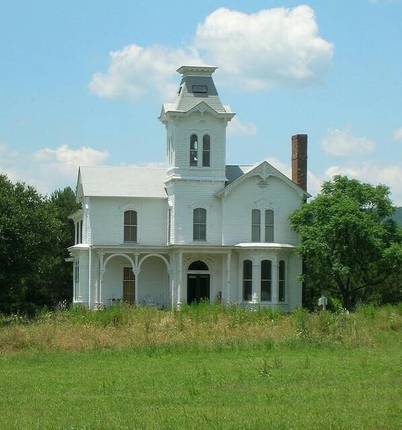 The Photo That Led to This Article The Photo That Led to This Article Sam Burnham, Curator A good development last year was having the ABG Facebook page participate in the Vanishing Georgia Facebook group. It has connected ABG to some great folks and given us an opportunity to share our stories and photos with a larger audience. I recently shared a photo of a house that was moved from downtown Rome to be fully restored some 23 miles out into rural Chattooga County. The story behind the house and the move were very popular with the members of the group and it stirred a lot of discussion, comments, and questions. The point of reference in the photo is a little deceptive. The zoom and focus make the house look closer to the camera than it actually is. There’s also a grassy mound between the house and the road. The mound obscures the lawn area immediately surrounding the home and gives the illusory appearance of unkempt landscaping. This led to a lot of questions about the status of the house, the condition of the house, and whether it was occupied or maintained. The house is occupied and beautifully restored. But the weeds and grass on the mound made such questions appropriate. One of the comments was that the house could use some landscaping and hardscaping. This was the comment that got me thinking about this article and the ideas came to shape as I worked on my own property. While tending to my own landscaping and hardscaping I caught that inspiration that Agrarian writers tend to find as they’re out dirtying their hands. The examples of two schools of thought about land usage that came to mind are a bit fancier than my own property and even more upscale than the house from my photograph. They also offer us a contrast. We can look to them as examples from rural and urban, or at least suburban, locations. 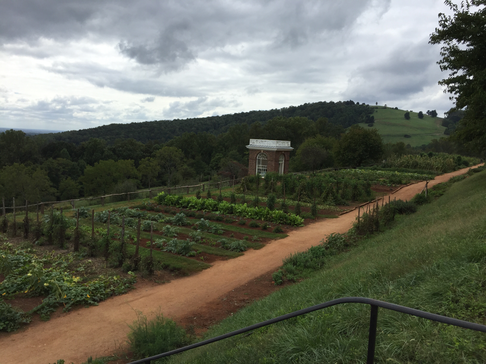 Jefferson's Garden, an Example of Utilitarian Beauty Jefferson's Garden, an Example of Utilitarian Beauty The earliest Agrarians, and the purists of today, had very little use for landscaping as we think of it today. Flower beds, shrubs, and ornamental plants all require time and energy and aren’t very practical in a frontier setting. These people were focused on survival. The crackers settling South Georgia and Florida were busy either growing or finding food, clothing, and shelter. There was not much time for transitioning from salvia to pansies with the changing of the seasons. Landscaping would have consisted of beans, squash, okra, corn, tomatoes. Hardscaping would have been hog pens, smokehouses, or chicken coops. For this side of the discussion I found myself considering Wendell Berry and his practical, simplistic approach. Berry is not the one you would go to to get advice on lawn care that keeps your HOA off your back. I love his quote on dandelions: “The world is in fact full of free things that are delightful. Flowers. The world is also full of people who would rather pay for something to kill the dandelions than to appreciate the dandelions. Well, I’m a dandelion man myself.” But in reading his writing you learn about beauty and resourcefulness. Beauty is something you can find if you stop to notice it, give weeds a chance. In a beautiful process land can produce food and goods and if they are treated right there will always be enough. 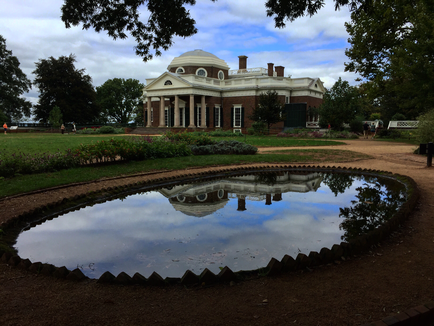 The Fish Pond, One Fancy Livewell The Fish Pond, One Fancy Livewell For a visual I go to Monticello, Jefferson’s little mountain. There was no corner market. There was no grocery store. If Jefferson, his family, their guests, or the numerous slaves were going to eat, Monticello had to produce the food. Meat came from the surrounding forest or from livestock The garden was large and located close to the main house. Although Jefferson’s many experiments were ornate they often involved plants that produced food of some sort or had some other practical use. Even the fish pond, one of the most photogenic features of the estate, had a practical purpose - keeping fish, which were caught in nearby rivers and streams, fresh until needed. The land was paramount and the beauty was both natural and practical. Even the house was built with that concept in mind. Though the house is large and spacious, it isn’t an imposing mansion. It is designed in a manner that appears compact. It doesn’t take away from Jefferson’s little mountain. 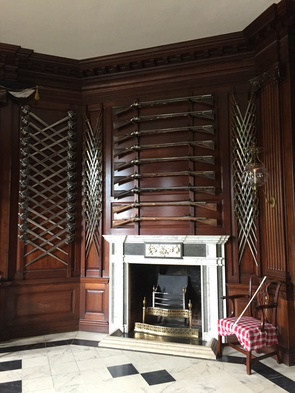 Details amd Craftsmanship Inside the Palace Details amd Craftsmanship Inside the Palace On the other side of the discussion I pondered Roger Scruton. Scruton is not the antithesis of Berry by any means. Their philosophies overlap in many ways. But Scruton brings a philosophy of urbanism to the discussion. His ideas on design and architecture focus on wise use of man made improvements, structures and infrastructure, and how aesthetics improve our world. His ideas can be implemented in our towns, suburbs, and even in our homes. For this discussion I offer the example of the rebuilt (ironically from Jefferson’s notes and drawings) Governor’s Palace in Williamsburg, Virginia. We featured the palace back in 2016. The home is enormous, one of the largest structures in the historic district. It is filled with details, mill work, wall and floor coverings, and decor that projected the wealth and power of the governor. But the gardens are what is pertinent. The pathways, fencing, benches, pergolas, and trellises all work in concert with trees, vines, flowers, and grasses. The purpose is purely aesthetic. Only an ice storage chamber in a back corner offers any hint of practicality. The gardens exist to be enjoyed, to be pleasing to the eye, to provide beauty. They also provide a respite. That is one thing beauty can do. For a man with a difficult task, the responsibilities of leading the colony of Virginia and the accountability to the King for the well-being of the colony and the face of the crown there, the gardens were an opportunity to step away. In just a few steps out the rear doors he was no longer in Williamsburg, no longer on duty. He was in some other place, perhaps some other time. Stress and pressure could be unloaded. The senses could be engaged in something pleasing. 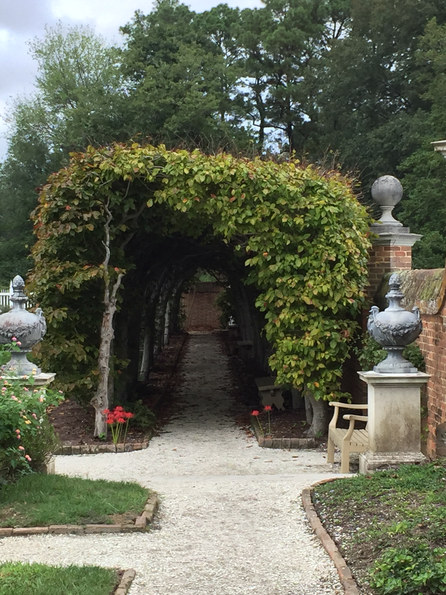 Hardscaping Provides a Respite in the Governor's Garden Hardscaping Provides a Respite in the Governor's Garden The hardscaping offered passage, a quiet place to sit, even isolation from the outside world. The landscaping provided color, shade, texture. It attracted birds, bees, squirrels, it breathed life into an urban environment. The entire experience offered an opportunity to reflect, meditate, relax. That is what landscaping and hardscaping offer us at home, albeit on a more humble scale. Daffodils, tulips, or liriope might not make the menu but they might make your day better. So I offer you this compare and contrast, perhaps even compare and agreement. It’s not that either of these are wrong. It’s not even that they are all that different. In fact, they can easily coexist and even compliment each other. How we apply them depends on our personal preferences, where we live, how much space we have to work with, and, of course, our budgets. The main thing is that we find ways to add beauty, practical or aesthetic, to our surroundings and that we take the time to appreciate it.
0 Comments
Leave a Reply. |
Sam B.Historian, self-proclaimed gentleman, agrarian-at-heart, & curator extraordinaire Social MediaCategories
All
Archives
November 2022
|

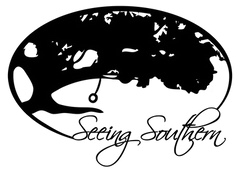
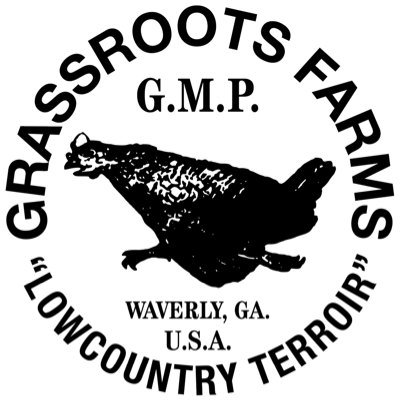
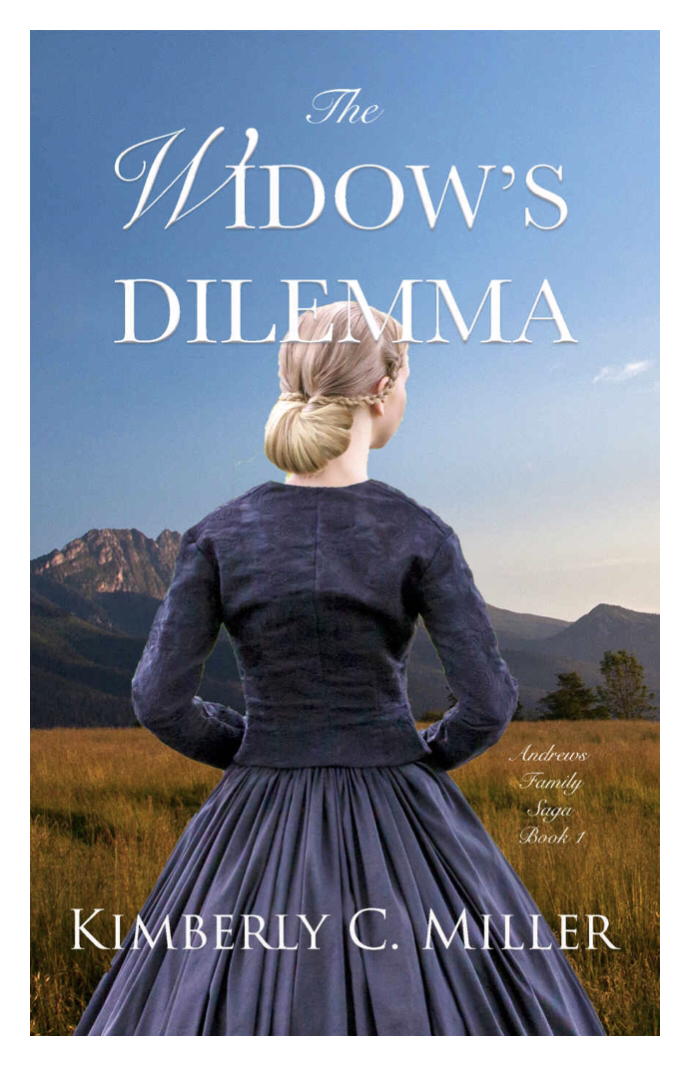
 RSS Feed
RSS Feed
